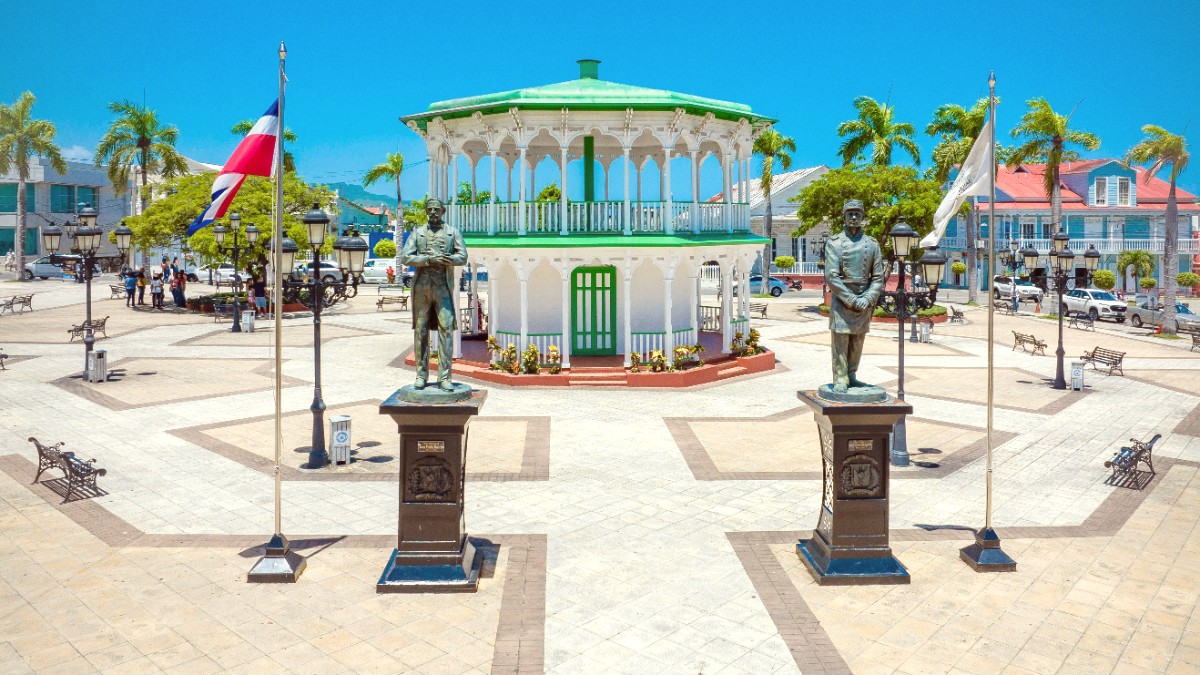
Dominican Republic
Puerto Plata features several well-known landmarks that capture the essence of the city's history, culture, and natural beauty.
These sites reveal centuries of development and local heritage.
Parque Independencia and Malecon are public spaces with no entry fees and are accessible 24/7.
Formal art galleries are limited in Puerto Plata. Local artisans display and sell their work in small shops around the city center.
Beyond the main museums, smaller, specialized exhibits might exist. Inquire locally for any temporary or niche collections related to local history or art.
Many all-inclusive resorts feature their own entertainment venues that host nightly shows, including traditional Dominican music and dance performances, tribute acts, and theatrical productions for their guests.
Before your visit, check local listings or inquire at your hotel for any temporary art exhibits, cultural performances, or special programming taking place during your stay.
Local newspapers or online event calendars supply this information.
Puerto Plata and its immediate surroundings are steeped in history, offering a window into centuries of development.
La Isabela: Located about an hour's drive east. Site of the first European settlement in the Americas, founded by Christopher Columbus in 1493. It features archaeological ruins of the original town. A small museum on site displays artifacts, giving a rare look into this early colonial period.
Puerto Plata Historic Center: Famous for its remarkably well-preserved Victorian architecture. Stroll through streets like Calle Beller and Calle 12 de Julio to admire colorful wooden houses with intricate gingerbread trim. The area around Parque Independencia stands out.
Catedral San Felipe Apóstol: Dominating Parque Independencia, this prominent church features a blend of Victorian and modern architectural styles. Its twin towers are a recognizable landmark.
Several statues and monuments along the waterfront promenade (Malecon) commemorate historical figures and significant events in Dominican history. The Statue of Christ the Redeemer atop Mount Isabel de Torres acts as a beacon, visible from much of the city.
Fortaleza San Felipe: This 16th-century fortress is the main military heritage site, displaying the defensive architecture of the colonial period.
While a commercial operation, the Brugal Rum Distillery represents an important part of the region's industrial heritage. Rum production has been a cornerstone of the Dominican economy and identity for generations. Tours offer a look into this historical process.
The panoramic views from the top are exceptional, offering sweeping vistas of the city, the coastline, and the expansive ocean. This is perhaps the most iconic viewpoint in the region.
This is one of the region's most famous adventure attractions. It features a series of natural waterfalls and pools carved into limestone rock by the Damajagua River. Book a tour.
Located west of Puerto Plata (approx. 1.5-2 hours drive), this protected lagoon is home to the West Indian Manatee. Boat tours are arranged to observe these gentle giants in their natural habitat. Find tours here.
Puerto Plata's landscape presents striking natural beauty, from towering mountains to pristine beaches and unique geological formations.
Puerto Plata and its surrounding areas offer a variety of beautiful beaches, each with its own character and activities.
From calm waters ideal for families to spots for watersports, there's a beach for every preference.
A wide, sandy beach with calm, clear waters, located directly in front of the Playa Dorada resort complex.
A local beach located west of the city, generally quieter than Playa Dorada.
Located in the nearby town of Sosúa (a 30-40 minute drive east), this is a calm, beautiful beach.
Further east (45-60 minute drive), Cabarete Beach is world-renowned for its consistent trade winds.
Beyond the popular spots, Puerto Plata holds quieter, equally rewarding experiences for those willing to explore.
While the main park area is known, take time to explore the quieter side streets of the historic center. You find more intricate and less-photographed examples of the city's unique Victorian architecture. These streets offer a peaceful stroll and an appreciation for the city's heritage.
The towns and beaches further west along the coast from Puerto Plata, like Punta Rucia (the departure point for Cayo Arena) or the Estero Hondo Manatee Sanctuary, offer quieter and less developed experiences than the main tourist hubs.
Capture unique moments beyond the usual tourist snapshots.
These moments truly capture the local essence.
Discover secluded spots for a more private experience.
Perfect for escaping the crowds and connecting with nature.
Seek out unique handmade items directly from their creators.
A direct way to support local artists and take home a special memento.
To avoid crowds at major attractions like the Teleférico and Fortaleza San Felipe, visit right at opening time or in the late afternoon, closer to closing. Tour groups usually arrive mid-morning.
For the Malecon, early mornings offer serene walks before the heat and crowds pick up.
Explore the quieter side streets of the historic center beyond Parque Independencia to discover hidden architectural gems and local life without the main tourist flow.
To discover authentic local experiences, ask your hotel staff or a local for their favorite "comedores" or lesser-known spots. They often give valuable insights.
This can lead to a cultural immersion.